How Rising Interest Rates Shape Seller Strategy

The Seller’s New Reality
If you’re planning to sell your home in today’s market, one factor is quietly reshaping everything: interest rates. While most headlines focus on how rates affect buyers, sellers are just as impacted—often in ways they don’t expect.
Higher mortgage rates reduce buyer affordability, shrink the pool of qualified buyers, and change how homes are priced and marketed. This guide breaks down how rising rates affect sellers, using data from the Federal Reserve, Urban Institute, and FHFA to help you make informed, strategic decisions.
Why Interest Rates Matter to Sellers
Mortgage rates are influenced by the Federal Reserve’s monetary policy. When the Fed raises its benchmark rate to fight inflation, mortgage rates tend to follow. In 2020, rates hovered around 3%. By mid-2025, they’ve climbed to nearly 8%.
For buyers, this means higher monthly payments and reduced loan eligibility. For sellers, it means fewer offers, longer time on market, and more price negotiations.
Let’s look at how this plays out:
-
A $400,000 mortgage at 3% interest costs about $1,686/month
-
At 7.5%, the same loan costs about $2,796/month
-
That’s a $1,100/month difference—enough to disqualify many buyers
As affordability drops, sellers must adapt their pricing and marketing strategies to stay competitive.
Buyer Behavior in a High-Rate Market
According to the Urban Institute, buyer behavior shifts dramatically when rates rise. In 2022, when mortgage rates jumped from 3% to over 6%, home sales dropped by nearly 20% nationwide.
This wasn’t just about affordability—it was about psychology.
Buyers tend to:
-
Delay purchases, hoping rates will fall
-
Fear overpaying in a volatile market
-
Prefer turnkey homes to avoid renovation costs
-
Seek seller concessions like rate buydowns or closing credits
Understanding these behaviors helps sellers position their homes more effectively. For example, offering a rate buydown or staging the home to highlight move-in readiness can make a big difference.
Pricing Strategy in a Shifting Market
Gone are the days of bidding wars and $50K over-ask offers. In today’s environment, pricing strategy is everything.
Let’s look at national data from the FHFA Home Price Index:
-
2020: Avg. rate 3.11% | Home price growth +10.8%
-
2021: Avg. rate 2.96% | Growth +18.8%
-
2022: Avg. rate 5.34% | Growth +6.6%
-
2023: Avg. rate 6.81% | Growth +3.4%
-
2024: Avg. rate 7.79% | Growth +1.2%
As rates rise, price growth slows. Sellers must adjust expectations accordingly. Pricing slightly below market comps can attract attention and create urgency. Offering incentives like closing cost credits or rate buydowns can also help bridge the affordability gap.
The Math Behind Buyer Affordability
Let’s break down how interest rates affect what buyers can afford. Assume a buyer qualifies for a $2,500 monthly mortgage payment.
-
At 3.00% interest, they can afford a ~$592,000 loan
-
At 5.50%, that drops to ~$460,000
-
At 7.50%, it falls to ~$390,000
That’s a $200K drop in purchasing power. If your home is priced at $550K, you’ve just lost a large segment of potential buyers.
This is why pricing and incentives matter more than ever. Sellers who understand the math can better align their listings with what buyers can realistically afford.
Should You Wait to Sell?
Many sellers wonder: should I wait until rates drop?
Here’s what to consider:
-
Inventory is still low in many markets
-
The Fed has signaled a “higher for longer” stance
-
Buyer demand remains strong in certain segments, especially for well-maintained homes
According to Realtor.com, homes listed in early spring 2024 sold 18% faster than those listed in late summer. Timing matters—but so does preparation. Sellers who list during low-inventory periods often face less competition and attract more serious buyers.
Seller Strategies That Work
Here are proven tactics to help sellers thrive in a high-rate market:
-
Offer a Rate Buydown Pay points to reduce the buyer’s interest rate. For example, a $10,000 concession could lower the buyer’s rate by 1%, making the monthly payment more affordable.
-
Stage for Value Highlight features that reduce long-term costs—like a new roof, energy-efficient windows, or updated HVAC systems. These upgrades can offset buyer concerns about future expenses.
-
Be Flexible Consider contingent offers or delayed closings to accommodate buyers who need time to sell their current home or secure financing.
-
Work With a Skilled Agent Agents who understand rate dynamics can market your home more effectively, target the right buyer segments, and negotiate strategically.
Local Market Snapshot: Aurora, IL
Let’s look at your local market, Jai.
As of July 2025:
-
Median home price: $348,000
-
Average days on market: 32
-
30-year fixed rate: 7.79%
-
Inventory: Down 12% year-over-year
Despite high rates, low inventory is keeping prices relatively stable. Sellers who price competitively and offer incentives are still closing deals quickly.
Homes in good condition, priced under $400K, are seeing strong activity. Move-in-ready properties with updated kitchens and bathrooms are especially appealing to buyers who want to avoid renovation costs in a high-rate environment.
Adaptability Is Your Advantage
Interest rates are a powerful force—but they’re not the whole story. Sellers who understand the data, anticipate buyer behavior, and adjust their strategy can still succeed in today’s market.
Whether you’re listing next week or next season, the key is to stay informed and flexible. And if you’re working with buyers too, understanding both sides of the equation makes you an even stronger negotiator.
Soruces :
-
Federal Housing Finance Agency (FHFA) Federal Housing Finance Agency. House Price Index. FHFA, 2025, https://www.fhfa.gov/data/hpi
-
Freddie Mac Freddie Mac. “Primary Mortgage Market Survey.” Freddie Mac, 2025, https://www.freddiemac.com/pmms
-
Urban Institute Goodman, Laurie, and Jun Zhu. “Housing Finance at a Glance: Monthly Chartbook.” Urban Institute, July 2025, https://www.urban.org/research/publication/housing-finance-glance-monthly-chartbook
Recent Posts











